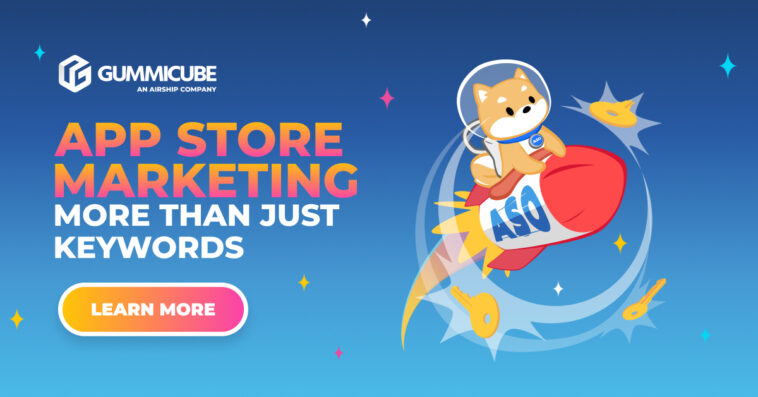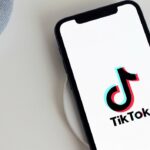In the realm of App Store Optimization, keywords have historically taken center stage as they are among the first factors that come to mind that affect rankings and performance. However, what happens when a user comes across your listing thanks to a keyword? Your keyword optimization efforts may be working, but the user journey doesn’t end at just discovery.
Your ultimate aim is to attract and keep users on your platform – a goal that requires much more than just your usual metadata updates. Through strategic conversion optimization and re-engagement strategies, you can position your app not only for increased visibility, but for downloads as well.
Conversion Optimization
Several factors can influence a user’s decision to download an app. While some users can be driven to install when they see creatives they like, others may find reassurance in an app’s reviews and ratings. The different causes of a potential user’s download provide all the more reason to ensure each and every conversion-focused element is optimized for success.
Your store listing will vary depending on the platform you are optimizing for. Differences between the Apple App Store and Google Play Store will ultimately place more weight on certain assets over others. However, the ASO best practices that guide your optimizations remain unchanged. The two conversion drivers of organic app store success that we’ll focus on are creatives and descriptions.
App Description Optimization
Acting as a storytelling playground, your app description is the perfect place to detail everything your app has to offer. This field serves to highlight the core features of your app, its unique value propositions, and new or exciting updates.
The first consideration is how your description looks in its final form. A computer screen virtually dwarfs the actual placement of the description – a mobile phone. Structuring it like an essay with long paragraphs that look short on a computer, but in reality, are massive on a smartphone can throw off users and make the content difficult to digest. Consider providing short snippets of key information and engaging copy to facilitate the reading experience for users.
It’s not just the description structure you need to consider, it’s what goes into it as well. The App Store and Play Store each treat descriptions differently, especially in the realm of indexation.
The App Store does not scan descriptions as part of its standard organic indexation. This means your description copy does not need to emphasize keywords as heavily. While they should still be included to establish relevance with a user’s needs and search queries, you should prioritize captivating copy that entices users to download. This only changes if you are running Apple Search Ads, during which Apple will indeed scan your description for keywords.
The Play Store, on the other hand, actively indexes keywords in your description, regardless if you are running paid campaigns or not. This means developing a description that emphasizes the keywords you are trying to rank for is a top priority. However, description indexation isn’t a green light to stuff the field with all the keywords you wish to rank for. After all, we are looking at ASO strategies that go beyond keywords.
You will still want to approach keywords similarly to Apple by writing copy that is informative and inviting. Apart from helping you rank higher in Google Play, your description should also act as a tool for closing the deal with whoever is reading it. Ultimately, you want to strike an optimal balance between engaging copy and keyword inclusion to leverage the full potential of your Google Play description.
Mobile App Creative Optimization
Your app creatives play a crucial role in conveying important information in a visually appealing manner. They act as the perfect medium for illustrating exactly what your app looks like and what users can expect prior to downloading. Think about including the most essential features of your app and what makes it stand out from the rest when creating your images.
Consider implementing the following app screenshot tips and tricks:
- Popular characters associated with your brand
- Iconography and colors representative of your brand
- Keywords
- In-app imagery
- Handset models
It isn’t enough to just make visually appealing screenshots, however. Where your screenshots appear are just as important. Like with descriptions, the App Store and Play Store both differ in the placement of screenshots. For the App Store, screenshots are visible in search results, whereas for Google Play they are limited to the app’s listing, unless related to a branded search query. This difference means screenshots in the App Store play a role in attracting users earlier in the app discovery process than on Google Play.
App Re-Engagement
When thinking about conversions, the initial download isn’t the end all be all. Simply put, it is merely the initial foot in the door when establishing your relationship with a user. To keep your app users you must not only attract, but engage, and re-engage consistently. This is where the next steps in our app store marketing take place.
Both Apple and Google offer native tools you can leverage to extend your app’s lifetime value and foster rediscovery, including In-App Events and Promotional Content.
Apple In-App Events & Google Promotional Content
Launched shortly after the release of iOS 15, In-App Events have been an invaluable tool for developers looking to highlight new features, promotions, and special occurrences taking place in their apps. Promotional Content is Google’s equivalent of the tool, providing Android publishers with their own resource for highlighting relevant events and offers.
Both app marketing instruments serve to attract existing or lapsed users, helping to take re-engagement beyond the boundaries of the App Store and Google Play. Both In-App Events and Promotional Content are effective tools in highlighting:
- New gameplay features or characters
- Offers and promotions (Google Play only)
- Product releases
- Seasonal and/or temporary events
There is a diverse range of placements users can find your In-App Events and Promotional Content, each with its own copy and creative display implications. Familiarize yourself with where your event cards may appear to ensure your content is optimized when users come across them.
App A/B Testing & Iterations
Identifying winning strategies in your app marketing plan is a continuous process. What you decide to implement should be backed by comprehensive data justifying the change being made to your store listing, copy, creatives, or any other element of your app. Instead of flying blind and assuming your next modification will work, you can leverage the power of A/B testing to guide your edits.
Mobile A/B Testing
App A/B testing in the App Store & Play Store is quintessential to thriving long-term. As your competitors adapt to the needs of users, so should your app listing. Tools like Apple’s Product Page Optimization and Google’s Store Listing Experiments both serve as native A/B testing platforms for you to run campaigns and test different asset combinations. While there are differences between the two, both can be used if you’re planning on adjusting your app listing and are unsure where to start.
Product Page Optimization lets you edit:
- Icon
- Screenshots
- Preview Video
Store Listing Experiments let you edit:
- Icon
- Screenshots
- Feature Graphic
- Preview Video
- Descriptions (depending on the type of campaign)
The results of your A/B testing will ultimately power the different iterations of your app listing. This perpetual approach to analyzing, testing, and modifying your app’s assets can help you stay competitive and leverage the different seasonal trends and user behaviors over time.
App Store Marketing for Conversions
Your App Store Optimization efforts must adopt a holistic approach in order to remain competitive and grow your app. No longer is it enough to simply identify the right keywords and hope for the best, nor can you just rely on the initial download as an indicator of success.
When it comes to conversion optimization, continual analysis and optimization will be your best friends in the ever-evolving and competitive landscape of the App Store and Google Play.
Need help with your ASO? Get in touch with Gummicube today!







Comments
Loading…